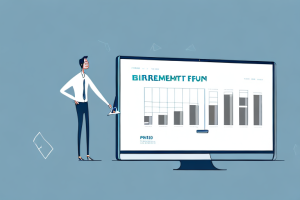Retiring from your job is a major milestone in your life, and it often involves notifying your employer through a retirement letter. While it may seem like a simple task, it is important to approach it with the same level of professionalism and thoughtfulness as any other professional communication. In this article, we will explore the importance of a well-written retirement letter and provide you with a step-by-step guide on how to craft an effective one. Additionally, we will discuss key elements to include in your retirement letter, tips for expressing gratitude and appreciation, and common mistakes to avoid. So, let’s dive in!
The Importance of a Well-Written Retirement Letter
A retirement letter serves as a formal notice to your employer that you are planning to retire from your position. It is not only a professional courtesy but also a legal requirement in many cases. A well-written retirement letter allows you to express your gratitude, intentions, and future plans, while also providing an opportunity to tie up loose ends and ensure a smooth transition for your colleagues. Furthermore, it serves as your official record of retirement and could potentially impact your future benefits, so it is crucial to approach it with care and attention to detail.
When writing a retirement letter, it is important to consider the tone and content of the letter. Expressing gratitude towards your employer and colleagues can leave a positive impression and maintain good relationships. Additionally, clearly stating your intentions and future plans can help your employer make necessary arrangements and ensure a smooth transition for your team. It is also advisable to include any outstanding tasks or projects that need to be completed or transferred to another employee. Taking the time to carefully craft your retirement letter can demonstrate professionalism and leave a lasting impression on your employer and colleagues.
Understanding the Purpose of a Retirement Letter
The purpose of a retirement letter goes beyond simply informing your employer about your retirement. It also serves as an opportunity to express your appreciation for the opportunities and experiences you have had during your tenure with the company. Additionally, it allows you to communicate any intentions or plans you may have for the future, whether it’s pursuing new hobbies, traveling, or spending more time with family. Understanding the purpose of a retirement letter will help you create a document that not only satisfies the administrative requirements but also leaves a positive impression on your employer and colleagues.
Key Elements to Include in Your Retirement Letter
When crafting your retirement letter, it is important to include key elements that ensure clarity and professionalism. Firstly, you should clearly state your intention to retire and include the specific date or effective date of your retirement. This provides your employer with a timeline and allows them to plan accordingly. Next, expressing gratitude and appreciation for the opportunities and support you have received throughout your career is essential. Reflect on the positive experiences, mentors, and colleagues who have made an impact on your professional journey.
In addition to expressing gratitude, you should also communicate your intentions and future plans. This can include outlining any post-retirement projects, hobbies, or travel plans that you plan to pursue. However, it is important to strike a balance between sharing personal aspirations and maintaining a professional tone.
Moreover, it is a good idea to offer assistance during the transition period. This can include providing guidance to your replacement, offering to train new staff, or making yourself available for any queries or handovers. This willingness to help demonstrates your commitment to the organization even during your retirement.
Lastly, don’t forget to highlight your contact information, so your employer can easily reach out to you should they require any additional information or wish to maintain contact.
Crafting a Professional and Polite Tone in Your Retirement Letter
Creating a professional and polite tone in your retirement letter is crucial to maintaining your reputation and positive relationships with your employer and colleagues. Start by opening the letter with a formal salutation, addressing the appropriate individual or department. Use a respectful and cordial tone throughout the letter, ensuring that your language is professional and avoids any negativity or criticism.
While it is important to express gratitude and appreciation, ensure that your letter strikes a balance between acknowledging the support you have received and being overly sentimental. Keep the focus on your accomplishments, experiences, and the relationships you have built. This will show your employer that you have been thoughtful and reflective in your decision to retire.
Additionally, make sure to proofread your retirement letter thoroughly to eliminate any grammatical errors or typos. A well-presented letter reflects positively on your attention to detail and professionalism.
Step-by-Step Guide to Writing an Effective Retirement Letter
Now that we have discussed the purpose, importance, and tone of a retirement letter, let’s break it down into a step-by-step guide:
1. Begin your retirement letter with a formal salutation, addressing the appropriate individual or department.
2. Clearly state your intention to retire and include the specific date or effective date of your retirement.
3. Express gratitude and appreciation for the opportunities and experiences you have had in your career.
4. Communicate your intentions and future plans in a professional manner.
5. Offer assistance during the transition period to facilitate a smooth handover.
6. Highlight your contact information, so your employer can easily reach out to you if needed.
7. Close the letter with a formal closing and your name.
Remember, this is a general guide, and you can customize your retirement letter according to your specific situation and work environment.
Tips for Expressing Gratitude and Appreciation in Your Retirement Letter
Expressing gratitude and appreciation is a crucial aspect of a retirement letter. Here are a few tips to help you effectively convey your sentiments:
1. Be specific: Mention specific individuals, projects, or experiences that have made an impact on your career.
2. Use positive language: Use words that showcase your gratitude and appreciation, such as “thankful,” “grateful,” “fortunate,” or “privileged.”
3. Share anecdotes: Share specific anecdotes or stories that highlight the positive interactions or memories you have had with colleagues or mentors.
4. Be genuine: Ensure that your expressions of gratitude come from the heart and are sincere.
Remember, expressing gratitude is not only a professional courtesy but also an opportunity to nurture and maintain positive relationships beyond your retirement.
Addressing Your Intentions and Future Plans in Your Retirement Letter
Your retirement letter is an opportunity to communicate your intentions and future plans to your employer. While it is important to share your post-retirement goals, it is equally crucial to strike a balance between personal aspirations and maintaining a professional tone. Here are a few tips:
1. Focus on broad goals: Share your overall aspirations for retirement, such as spending more time with family, pursuing hobbies, or engaging in community work.
2. Keep it concise: Avoid going into excessive detail about specific plans. Your retirement letter should primarily focus on your appreciation and gratitude, rather than detailed life plans.
3. Reflect on career achievements: Highlight some of your significant career achievements and how they have shaped your decision to retire.
4. Emphasize availability: Mention that you are open to potential collaborations or consulting opportunities, should your employer require your expertise even after retirement.
Keeping these tips in mind will help you communicate your intentions and future plans effectively while maintaining a professional tone.
Common Mistakes to Avoid When Writing a Retirement Letter
When writing a retirement letter, it is important to avoid common mistakes that can detract from the overall impact and professionalism of your communication. Here are several mistakes to watch out for:
1. Lack of clarity: Ensure that you clearly state your intention to retire and include the specific date or effective date of your retirement.
2. Negativity or criticism: Avoid criticizing your employer, colleagues, or the organization in your retirement letter. Focus on positivity and express appreciation instead.
3. Excessive details: Keep your retirement letter concise and avoid providing unnecessary details or personal information that is not relevant to your retirement.
4. Poor proofreading: Failing to proofread your retirement letter can lead to grammatical errors and typos that may detract from your professionalism. Take the time to carefully review your letter before sending it.
By avoiding these common mistakes, you can ensure that your retirement letter conveys your message effectively and professionally.
Customizing Your Retirement Letter for Different Work Situations
Each work situation is unique, and it is essential to customize your retirement letter accordingly. Here are a few scenarios and considerations:
1. Early retirement: If you are retiring earlier than anticipated, you may want to mention the reasons behind your decision. However, ensure that your tone remains positive and professional throughout.
2. Long tenure: If you have worked for the same company for an extended period, you might want to highlight your loyalty and commitment. Reflect on the milestones you have achieved and the growth you have witnessed.
3. Transitioning to a new career: If you plan to transition into a new career after retirement, consider mentioning your intentions and how your current role has prepared you for this new venture.
Customizing your retirement letter for different work situations demonstrates thoughtfulness and consideration for the specific circumstances surrounding your retirement.
Examples of Well-Written Retirement Letters for Inspiration
If you are looking for inspiration, reading examples of well-written retirement letters can be helpful. Here are a few examples that showcase different tones and styles:
1. Formal and appreciative:
[Insert example letter here]
2. Personal and reflective:
[Insert example letter here]
3. Concise and professional:
[Insert example letter here]
These examples should serve as inspiration and guide you in finding the right tone and content for your retirement letter.
How to Format and Structure Your Retirement Letter Professionally
Formatting and structuring your retirement letter professionally is essential to ensure readability and convey your message effectively. Here are some formatting tips:
1. Use a professional font: Stick to a classic and easy-to-read font, such as Arial or Times New Roman, in a reasonable font size (12 – 14 pt).
2. Maintain proper spacing: Use 1.5 or double spacing to ensure clarity and readability.
3. Include the current date: Place the current date at the top of your letter, aligned with the left margin.
4. Use proper headings and subheadings: Format your letter with appropriate headings and subheadings to organize your thoughts and guide the reader.
5. Proofread for errors: Thoroughly review your retirement letter to eliminate any grammatical errors or typos.
By following these formatting tips, you can ensure that your retirement letter appears professional and well-structured.
Communicating Your Decision with Colleagues and Superiors through Your Retirement Letter
Communicating your decision to retire effectively with your colleagues and superiors is crucial for maintaining positive relationships and a smooth transition. Your retirement letter is one of the primary means of communication. Here are a few tips:
1. Notify your immediate supervisor in person: Before submitting your retirement letter, inform your immediate supervisor about your decision to retire in person. This allows for a more personal and direct conversation.
2. Be professional and positive: When communicating your decision through your retirement letter, maintain a professional and positive tone. Express gratitude for the opportunities and support you have received and emphasize your commitment to a smooth transition.
3. Offer assistance: Highlight your willingness to assist during the transition period and offer to train or mentor your replacement if appropriate.
4. Share your retirement letter selectively: You can choose to share your retirement letter with colleagues or superiors who may be affected by your retirement. This allows them to be aware of your plans and seek clarification if needed.
Remember, effective communication and transparency are vital for ensuring a smooth transition for both you and your colleagues.
Tips for Proofreading and Editing Your Retirement Letter for Clarity and Coherence
Proofreading and editing your retirement letter are crucial steps to ensure clarity and coherence. Here are a few tips to help you in this process:
1. Take a break before proofreading: After finishing your retirement letter, take a short break before proofreading. This allows you to approach your letter with fresh eyes and a clear mind.
2. Read it aloud: Reading your retirement letter aloud can help identify awkward phrasing, grammatical errors, or inconsistencies.
3. Check for clarity: Ensure that your statements are clear and that your intentions and future plans are effectively communicated.
4. Seek a second opinion: Consider asking a trusted friend, colleague, or family member to review your retirement letter. Fresh perspectives can help identify any areas that need improvement or clarification.
5. Edit for brevity: Trim any extraneous details or unnecessary information that may distract from the main message.
Taking the time to proofread and edit your retirement letter will help you present a clear, concise, and coherent message.
Understanding the Legal Implications of Your Retirement Letter
Before submitting your retirement letter, it is essential to understand the legal implications it may have. Here are a few points to consider:
1. Review your employment contract: Take the time to go through your employment contract and any applicable company policies to ensure you comply with the requirements for retirement notice.
2. Consult with HR: Reach out to your organization’s Human Resources department to discuss any legal requirements or procedures related to your retirement.
3. Consider pension and benefit matters: Your retirement may have implications on your pension plan, health insurance, or other benefits. Research and communicate with the appropriate departments to understand any necessary steps or paperwork.
By taking these precautions and seeking appropriate guidance, you can ensure that your retirement letter aligns with legal requirements and avoids any potential issues.
As we conclude this article, it is important to remember that your retirement letter represents more than just a formal announcement. It is an opportunity to express gratitude, communicate your intentions, and maintain positive relationships with your employer and colleagues. By following the tips and guidelines outlined here, you can craft a retirement letter that reflects your professionalism, appreciation, and strategic thinking. So, take the time to draft a well-written retirement letter and leave a lasting impression as you embark on this exciting new chapter of your life.



